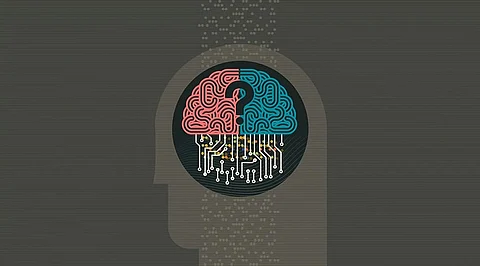

The concept of artificial intelligence began with the notion of making machines act like humans. At present, artificial intelligence has improved to such an extent that AI-based machines and robots can paint, write poems and easily do many things that a human can do. Recently AI technology has been able to solve an important issue with the concept of protein folding, that scientists had been working on in vain for a long time. So, one can say that AI stands in the middle of humans and machines. However, despite its expertise in human-like automation, there are still some simple but vital aspects of human nature that are yet to be achieved by AI.
Even though AI robots and machines are capable of solving difficult problems of mathematics, physics, and engineering, they mostly cannot solve some simple problems. For example, 'Rani went to the shop and chose a red dress. She paid 500 rupees.' – This statement has no direct indication that Rani bought the red dress. A human would easily understand it because one has background knowledge that when someone is choosing an object and then paying the money, this means that the person has bought the object. However, the AI machine will not be able to automatically come to the conclusion about Rani buying the red dress. It does not have that background knowledge that the combined act of choosing and paying money refers to the act of buying. This background knowledge can be referred to as common sense. Common sense grows within a human through experience and the practice of retaining that experience, which AI is still not capable of doing.
Dave Gunning of DARPA has stated in an interview with Forbes, "The absence of common sense prevents an intelligent system from understanding its world, communicating naturally with people, behaving reasonably in unforeseen situations, and learning from new experiences."
Some might say that this common sense can be implemented by uploading databases of everyday facts into the machine. In 1984, such an operation was started with the name Cyc. The basic problem with this operation is that common knowledge has its own array of exceptions and a variety of ideas, which would be impossible to put in a machine.
When a human child grows up, he or she learns new things and gradually adapts to the environment. The AI machine is made with inputting loads of data sets and once it is deployed, it does not have the capability of learning anymore, which prevents the machine from achieving adaptability. Machines with artificial intelligence are incapable of simultaneously learning from the environment and automatically adapting to those new changes in knowledge. Machines can be updated from time to time. The ability to continually learn over time by accommodating new knowledge while retaining previously learned experiences is referred to as continual or lifelong learning. Such a continuous learning task has represented a long-standing challenge for neural networks and, consequently, for the development of artificial intelligence.
If the AI-based- robot is sent to an unknown environment, its human creator may not have any idea of what the robot might face at that place. So, the human creator would not be able to input any database into the robot regarding this. As a result, the robot will not be able to adapt to the environment of that unknown place automatically. It cannot come up with instant ideas or instincts that would differ from a human who can always adapt to unknown environments by adding its newly acquired knowledge with the previously retained ones.
AI is also unable to connect between cause and effect, which prevents it from understanding the basic dynamics of the world. An AI robot can always perform the instructed activity, but it cannot inwardly understand the cause of the activity or what effect it might have in the future. For example, as per instruction, in the morning time, the machine may serve breakfast, but it would not necessarily understand the connection of breakfast with the morning. Causal reasoning is an essential part of human intelligence, shaping how we make sense of and interact with our world. We know that dropping a vase will cause it to shatter, drinking coffee will make us feel energized, and exercising regularly will make us healthier.
Brenden Lake of New York University stated, "Our minds build causal models and use these models to answer arbitrary queries, while the best AI systems are far from emulating these capabilities."
Scientists are consistently working towards making artificial intelligence capable of human-like attributes and activities. With the rate of improvement and advancement, robots like Sofia give hints that in the future these shortcomings may also be recovered by the machines. The concrete aspect of this situation is that in being the bridge between humans and machines, artificial intelligence is running extremely fast to catch up with human intelligence very soon.
Join our WhatsApp Channel to get the latest news, exclusives and videos on WhatsApp
_____________
Disclaimer: Analytics Insight does not provide financial advice or guidance. Also note that the cryptocurrencies mentioned/listed on the website could potentially be scams, i.e. designed to induce you to invest financial resources that may be lost forever and not be recoverable once investments are made. You are responsible for conducting your own research (DYOR) before making any investments. Read more here.
